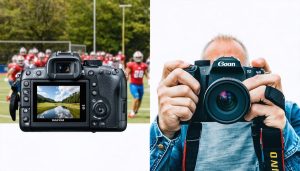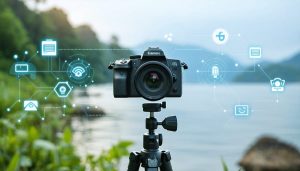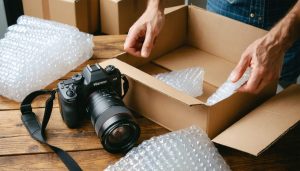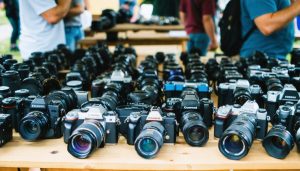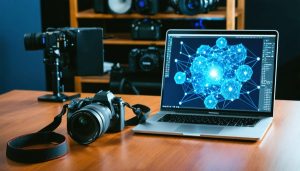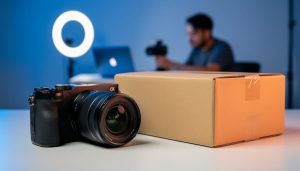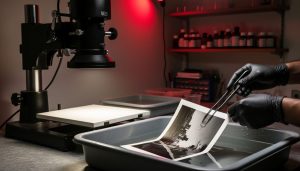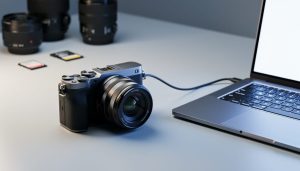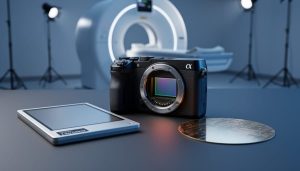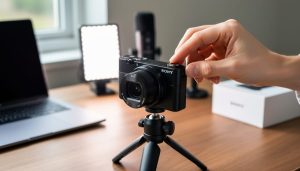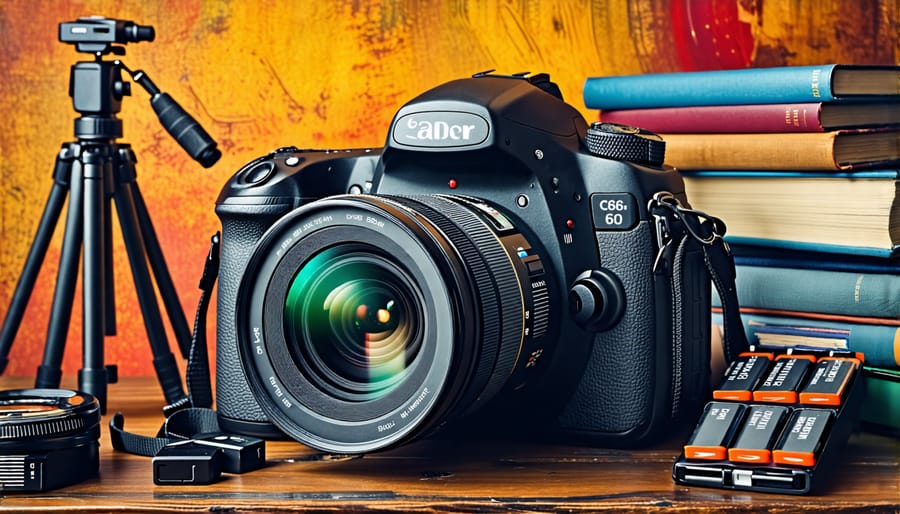
Choose a versatile, entry-level DSLR or mirrorless camera with manual controls to learn photography fundamentals. Invest in a sharp, fast 50mm prime lens for excellent image quality and low-light performance. Protect your gear with a well-padded camera bag that fits your camera body and 1-2 lenses. Always keep a spare battery and large-capacity memory card on hand. Master composition, exposure, and your camera’s manual settings through deliberate practice. The best way to improve is to shoot regularly, review your images critically, and continually challenge yourself to capture the world in new, creative ways.
1. A Quality Entry-Level Camera
When embarking on your photography journey, one of the most important investments you’ll make is in a quality entry-level camera. While it might be tempting to start with a basic point-and-shoot or rely solely on your smartphone, a dedicated beginner camera will give you the tools and flexibility needed to truly explore the craft.
Look for a camera that offers manual controls, allowing you to adjust settings like aperture, shutter speed, and ISO. This will enable you to experiment with different creative techniques and understand how each setting impacts your final image. Entry-level DSLR or mirrorless cameras are excellent choices, as they provide a good balance of ease-of-use and room for growth.
Some recommended models for beginners include the Canon Rebel series (such as the T8i), Nikon D3500, Sony A6000, and Fujifilm X-T200. These cameras offer user-friendly interfaces, good image quality, and a wide selection of compatible lenses. Don’t feel pressured to overspend on features you may not need right away. Focus on getting a reliable camera that feels comfortable in your hands and fits your budget.
Remember, the best camera is the one you’ll actually use, so choose a model that inspires you to get out and start shooting!
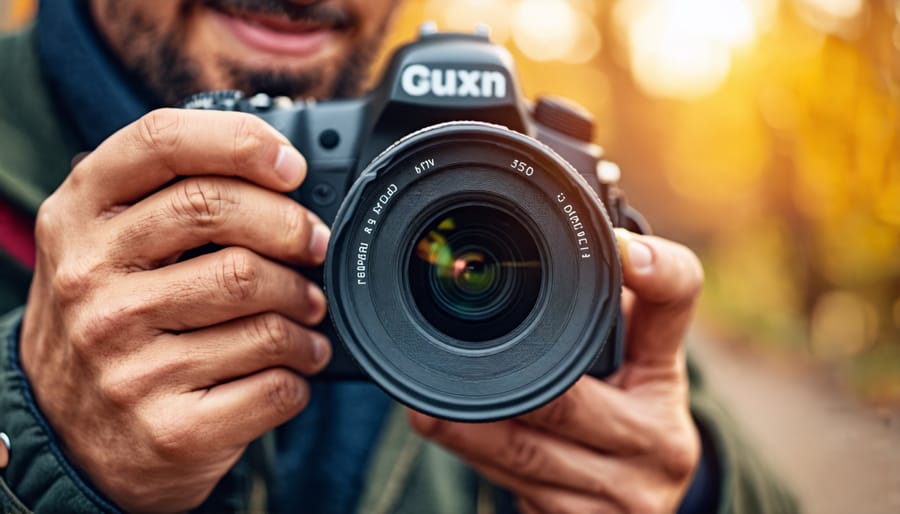
2. A Versatile Lens Kit
A good lens kit is the foundation of any photographer’s gear, and as a beginner, you’ll want to start with a couple of essential lenses that cover a range of focal lengths. First, consider a standard zoom lens, typically in the 18-55mm range for crop sensor cameras or 24-70mm for full-frame. These versatile lenses allow you to capture wide-angle shots, like landscapes or group photos, as well as tighter portraits or detail shots by zooming in. Look for a lens with a maximum aperture of f/2.8 or wider, which will help in low-light situations and create beautiful background blur.
Your second lens should be a prime lens with a fixed focal length, such as a 50mm f/1.8. Prime lenses often have wider apertures, letting in more light and providing sharper images. The 50mm is a fantastic all-around lens, great for portraits, street photography, and even landscapes. It encourages you to think more about composition by moving your feet rather than relying on zoom.
As you grow as a photographer, you can add more specialized lenses like wide-angles, telephotos, or macro lenses. But starting with a standard zoom and prime will give you the flexibility to explore various genres and hone your skills without breaking the bank. Remember, investing in quality glass is often more important than having the latest camera body, as lenses tend to hold their value and can be used across multiple camera upgrades.
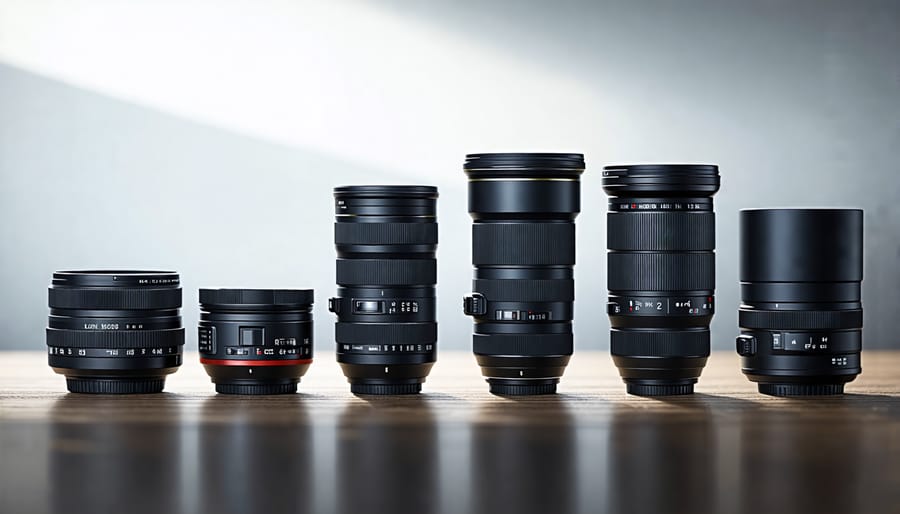
3. Sturdy Tripod
A sturdy tripod is an essential tool for capturing sharp images in low light situations or when using slower shutter speeds. It provides a stable base for your camera, eliminating camera shake and resulting in crisp, clear photos. When choosing a tripod, look for one that is lightweight and portable, making it easy to carry with you on shoots. However, don’t sacrifice stability for weight – ensure the tripod is robust enough to support your camera and lens combination securely. Consider tripods with adjustable legs and a center column for flexibility in positioning your camera at various heights and angles. Some tripods also feature built-in spirit levels to help you achieve perfectly straight horizons. Investing in a quality tripod will pay off in the long run, providing a reliable foundation for your photography kit and enabling you to capture stunning images in a wider range of conditions.
4. Editing Software
Post-processing is an essential part of the photographic process, allowing you to fine-tune your images and bring your creative vision to life. While it may seem daunting at first, there are many beginner-friendly editing software options available that offer powerful features at a reasonable price.
One popular choice for novice photographers is Adobe Lightroom. This intuitive program provides a comprehensive set of tools for organizing, editing, and enhancing your photos. With its user-friendly interface and guided tutorials, Lightroom makes it easy to adjust exposure, color, contrast, and more. It also offers preset filters for quick and easy styling.
Another excellent option is Skylum Luminar, which boasts an AI-powered editing assistant that analyzes your photos and suggests optimal adjustments. This can be a great starting point for beginners who are unsure where to begin with post-processing. Luminar also features a wide range of creative filters and effects to help you achieve stunning results with just a few clicks.
For those on a budget, free programs like GIMP or Darktable offer a robust set of editing tools without the price tag. While they may have a steeper learning curve, these open-source alternatives are highly capable and can produce professional-quality results with practice.
Whichever software you choose, take the time to explore its features and experiment with different techniques. Post-processing is a skill that develops over time, but with the right tools and a willingness to learn, you can elevate your photos to the next level.
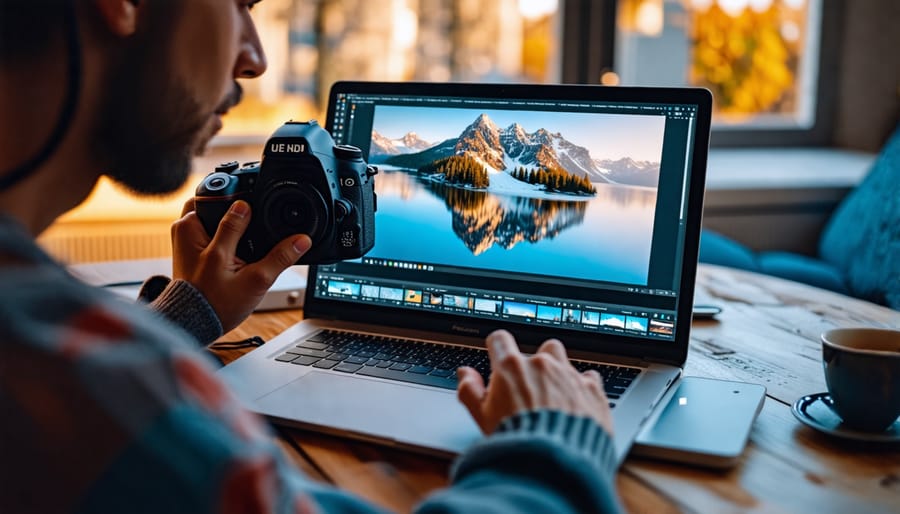
5. Camera Bag
A quality camera bag is essential for protecting your photography gear while on the go. When selecting a bag, consider the size and amount of equipment you need to carry. Look for bags with ample padding to cushion your camera body and lenses from bumps and impacts. Water resistance is another key feature, especially if you plan to shoot outdoors in various weather conditions. Comfort is also crucial – choose a bag with adjustable, padded straps and ergonomic design for easy carrying during long shoots. Some popular options include backpack-style bags for even weight distribution, shoulder bags for quick access, and hard-shell cases for maximum protection. Investing in a durable, well-designed camera bag will give you peace of mind knowing your gear is safe and secure wherever your photography adventures take you.
6. Extra Batteries and Memory Cards
Having extra batteries and memory cards on hand is a must for any photographer, whether you’re a beginner or a seasoned pro. There’s nothing worse than being in the middle of a shoot and running out of power or storage space. When choosing batteries, opt for reliable brands that are compatible with your specific camera model. Consider investing in a battery grip for extended shooting sessions. For memory cards, select reputable brands with fast read and write speeds to ensure smooth performance. Plan for enough capacity based on your typical shooting habits – it’s better to have too much than not enough. Always format your memory cards in-camera before each use to minimize the risk of corruption. By being prepared with spare batteries and memory cards, you’ll be able to focus on capturing great images without worrying about technical limitations.
7. Learning Resources
Investing in quality learning resources can accelerate your photography journey and help you master your gear more quickly. Consider purchasing beginner-friendly photography books that cover the fundamentals of exposure, composition, and camera settings. Online courses and workshops offer another fantastic way to develop skills at your own pace, with many providing lifetime access to the materials.
Some top resources we recommend include “Understanding Exposure” by Bryan Peterson, a classic book that demystifies the relationship between aperture, shutter speed, and ISO. For an interactive learning experience, check out the “Photography Masterclass” by Phil Ebiner on Udemy, which covers everything from basic camera settings to advanced editing techniques. Lastly, consider joining a local photography club or attending workshops in your area to connect with fellow enthusiasts and learn from experienced photographers. Remember, the key to growth is consistent practice and a willingness to experiment, so don’t hesitate to invest in your education as a photographer.
Conclusion
You now have the essential photography kit to begin your exciting journey into the world of capturing images. Remember, while having the right gear is important, the true magic of photography lies in your creativity, vision, and willingness to experiment. Don’t be afraid to take your camera out often and shoot a variety of subjects in different lighting conditions. The more you practice, the more comfortable and proficient you’ll become with your equipment. Keep learning by reading tutorials, watching videos, and studying the work of photographers you admire. Most importantly, have fun and enjoy the process of discovering your unique photographic style. Happy shooting!

